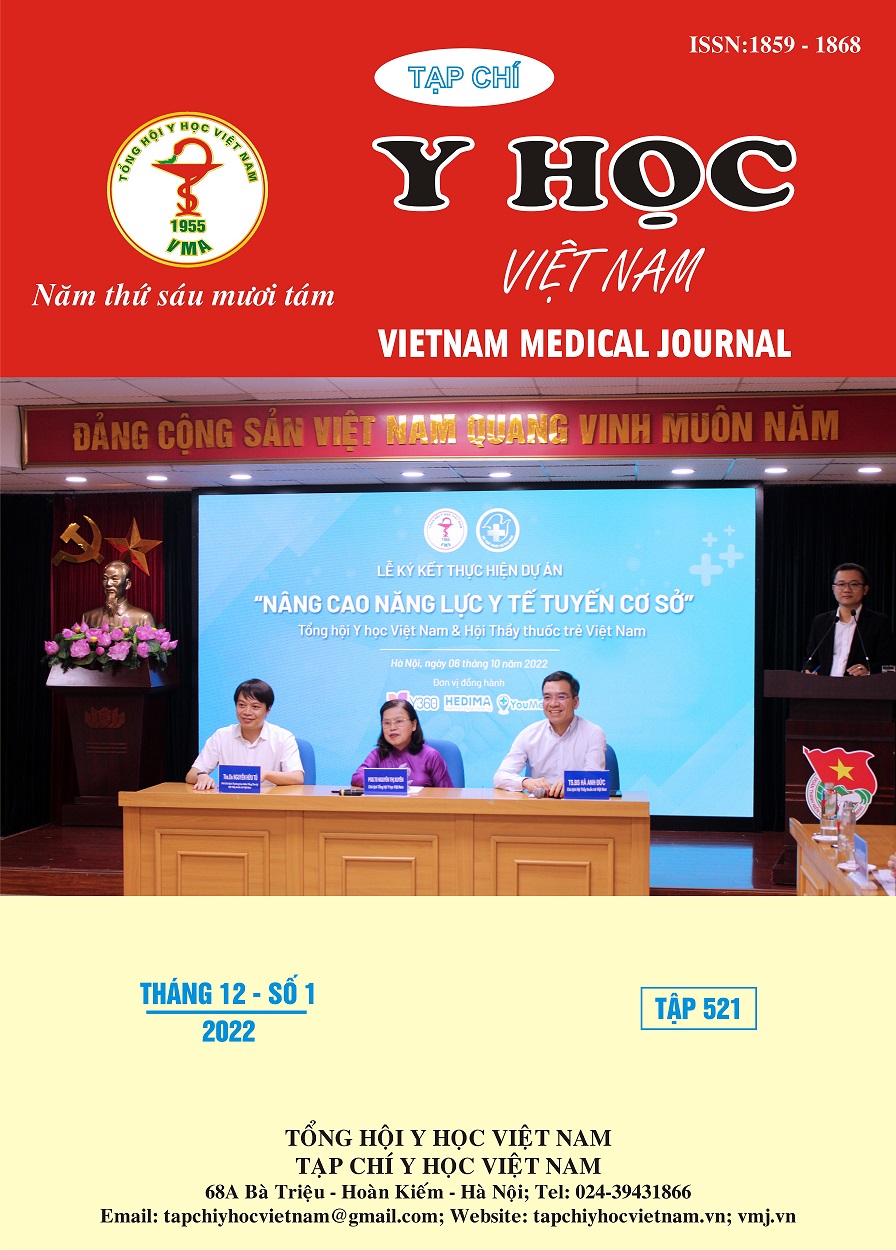THE PREDICTIVE VALUE OF DIAPHRAGM ULTRASOUND FOR WEANING OUTCOMES IN MECHANICALLY VENTILATED PATIENTS
Main Article Content
Abstract
Study objectives: Evaluation of diaphragmatic ultrasound in predicting mechanically ventilated weaning. Study subjects: 45 mechanically ventilated weaning patients at Bach Mai Intensive care center. Methods: Prospective, Descriptive study, patient’s data were collected at the time the patients had indication for entracheal extubation. The patients were put in semi-recumbent position, the mechanically ventilated measurements were collected when the patients were ventilated by PSV mode, diaphragmatic ultrasound was perfomed just before extubation when the patients were breathing spontaneously by endotracheal. Results: Analyte data of 45 patients, successful extubation rate was 73.3% (n=32), failed extubation rate was 26,7% (n=13), 18 patients had diaphragmatic dysfunction (40%), 27 patients had not diaphragmatic dysfunction (60%) Bilateral Diaphragmatic Excursion in Normal breath (DEN) and bilateral Diaphragmatic Thickness Fraction (DTF%) are not different in successful extubation group and failed extubation group. Right DEN in failed extubation group is lower than in successful extubation group. The combined sensitivity and specificity of right DEN<0,48cm for extubation failure was 100% and 60%, respectively. The area under the receiver operating characteristic curve was 0.86 for right DEN. Conclusion: Diaphragmatic ultrasound is not value in predicting mechanically ventilated weaning on all patients. The patient who had right DEN < 0,48 cm were predicted failed extubation, right DEN > 1 cm predicts sucessfull extubation in patients who had strong cough strengh.
Article Details
Keywords
diaphragm ultrasound, diaphramatic excursion, diaphragmatic thickness fraction, mechanically ventilated weaning, endotracheal extubation.
References
2. Đinh Thị Thu Hương. Đánh giá các yếu tố liên quan đến tỉ lệ tử vong ở bệnh nhân viêm phổi thở máy. Tạp chí y học Việt Nam. 2019. http://thuvien.hmu.edu.vn/pages/cms/FullBookReader.aspx?Url=/pages/cms/TempDir/books/fa47f2a6-06bc-42e9-abed-c928ac36bbdc/2020/ 10/28/202008311457-e9ebcdea-5a46-424c-beaa-e0423708b0f4/FullPreview&TotalPage=18&ext=jpg#page/2/mode/2up. Accessed September 12, 2022.
3. Powers SK, Wiggs MP, Sollanek KJ, Smuder AJ. Ventilator-induced diaphragm dysfunction: cause and effect. Am J Physiol Regul Integr Comp Physiol. 2013;305(5):R464-477. doi:10.1152/ ajpregu.00231.2013
4. Braun SR. Respiratory Rate and Pattern. In: Walker HK, Hall WD, Hurst JW, eds. Clinical Methods: The History, Physical, and Laboratory Examinations. 3rd ed. Boston: Butterworths; 1990. http://www.ncbi.nlm.nih.gov/ books/NBK365/. Accessed September 12, 2022.
5. Heunks LM, van der Hoeven JG. Clinical review: The ABC of weaning failure - a structured approach. Crit Care. 2010;14(6):245. doi:10.1186/cc9296
6. Blumhof S, Wheeler D, Thomas K, McCool FD, Mora J. Change in Diaphragmatic Thickness During the Respiratory Cycle Predicts Extubation Success at Various Levels of Pressure Support Ventilation. Lung. 2016;194(4):519-525. doi:10.1007/s00408-016-9911-2
7. Ali E, Mohamad A. Diaphragm ultrasound as a new functional and morphological index of outcome, prognosis and discontinuation from mechanical ventilation in critically ill patients and evaluating the possible protective indices against VIDD. Egyptian Journal of Chest Diseases and Tuberculosis. 2016;66. doi:10.1016/ j.ejcdt.2016.10.006
8. Ali E, Mohamad A. Diaphragm ultrasound as a new functional and morphological index of outcome, prognosis and discontinuation from mechanical ventilation in critically ill patients and evaluating the possible protective indices against VIDD. Egyptian Journal of Chest Diseases and Tuberculosis. 2016;66. doi:10.1016/j.ejcdt.2016.10.006


